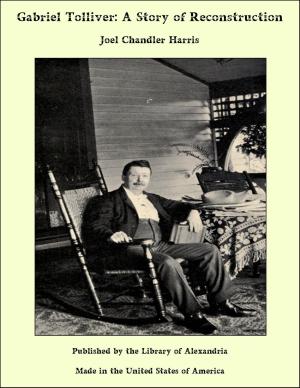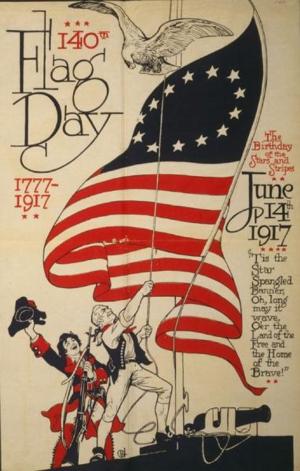The Hispaniola Plate (1683-1893)
Nonfiction, Religion & Spirituality, New Age, History, Fiction & Literature| Author: | John Bloundelle-Burton | ISBN: | 9781465609311 |
| Publisher: | Library of Alexandria | Publication: | March 8, 2015 |
| Imprint: | Language: | English |
| Author: | John Bloundelle-Burton |
| ISBN: | 9781465609311 |
| Publisher: | Library of Alexandria |
| Publication: | March 8, 2015 |
| Imprint: | |
| Language: | English |
Nothing is more notable in recent literature than the sudden renewal of interest in the historical novel. Mr. Stanley Weyman is the most successful of this group of younger writers, but there is now treading on his heels another young novelist, whose work shows such splendid promise as well as such remarkable achievement, that he bids fair to outstrip Mr. Weyman and come first to the goal. This is Mr. John Bloundelle-Burton, whose story, "The Desert Ship," created such a stir in London a short time ago. Mr. Burton was born in 1850. His parents intended him for a military life, but when at twenty-one he came into a comfortable inheritance, he determined to see something of the world. Already familiar with the Continent, he turned to fresher pastures and came to Canada; then running over the border into the "States," he lived down South for a considerable period. In Baltimore he first contracted the writing habit, sending an article to a paper there, which accepted it with thanks, but with nothing else. While down South he fell in with "Red Cloud," an Indian chief, picking up much information that was strange and new, and that was later to be utilized in "The Desert Ship." Going back to England, he flitted between London and Paris, the latter being his favorite abode. In the Place de la Madeleine he lived with a company that contained representatives of every class and country. Describing them Mr. Bloundelle-Burton says: "One of our number was a Scotch duke; another a tailor's son, enormously rich and not a bad fellow; another a Spahi, home on leave from Africa; a fourth a Spaniard, rolling in money; another an American, who afterward died in prison while awaiting his trial for killing--absolutely killing--a man in a duel. They could not get over that in Paris; indeed, as a Frenchman said to me, it really looked as if the American had fully intended to murder his countryman." Living in this way in Paris, our author began to write more and more; first for foreign papers, then for English ones. He began a connection with Galignani, which lasted intermittently for a long interval, and brought him acquaintance with many notable men, among them Jules Grévy, several years later President of the Republic. His next venture was sending English papers news from different popular resorts on the Continent--Switzerland and the Tyrol, Italy and the Riviera. Later on he helped edit a paper called The American Visitor, which told rich Americans where they could spend their money most rapidly, and where they had the best opportunity for catching a glimpse of fashionable society in England and on the Continent. Mr. Burton's first long story was "The Silent Shore," which had quite a career under several different guises. Originally published in volume form, it later appeared as a play at the Olympic Theater, then ran as a serial in Spanish in a South American paper, and ended up as a serial in several English provincial papers. His next story was, "His Own Enemy," in the author's opinion, the best novel he has yet produced, "though not, I hope, the best I shall write," he adds.
Nothing is more notable in recent literature than the sudden renewal of interest in the historical novel. Mr. Stanley Weyman is the most successful of this group of younger writers, but there is now treading on his heels another young novelist, whose work shows such splendid promise as well as such remarkable achievement, that he bids fair to outstrip Mr. Weyman and come first to the goal. This is Mr. John Bloundelle-Burton, whose story, "The Desert Ship," created such a stir in London a short time ago. Mr. Burton was born in 1850. His parents intended him for a military life, but when at twenty-one he came into a comfortable inheritance, he determined to see something of the world. Already familiar with the Continent, he turned to fresher pastures and came to Canada; then running over the border into the "States," he lived down South for a considerable period. In Baltimore he first contracted the writing habit, sending an article to a paper there, which accepted it with thanks, but with nothing else. While down South he fell in with "Red Cloud," an Indian chief, picking up much information that was strange and new, and that was later to be utilized in "The Desert Ship." Going back to England, he flitted between London and Paris, the latter being his favorite abode. In the Place de la Madeleine he lived with a company that contained representatives of every class and country. Describing them Mr. Bloundelle-Burton says: "One of our number was a Scotch duke; another a tailor's son, enormously rich and not a bad fellow; another a Spahi, home on leave from Africa; a fourth a Spaniard, rolling in money; another an American, who afterward died in prison while awaiting his trial for killing--absolutely killing--a man in a duel. They could not get over that in Paris; indeed, as a Frenchman said to me, it really looked as if the American had fully intended to murder his countryman." Living in this way in Paris, our author began to write more and more; first for foreign papers, then for English ones. He began a connection with Galignani, which lasted intermittently for a long interval, and brought him acquaintance with many notable men, among them Jules Grévy, several years later President of the Republic. His next venture was sending English papers news from different popular resorts on the Continent--Switzerland and the Tyrol, Italy and the Riviera. Later on he helped edit a paper called The American Visitor, which told rich Americans where they could spend their money most rapidly, and where they had the best opportunity for catching a glimpse of fashionable society in England and on the Continent. Mr. Burton's first long story was "The Silent Shore," which had quite a career under several different guises. Originally published in volume form, it later appeared as a play at the Olympic Theater, then ran as a serial in Spanish in a South American paper, and ended up as a serial in several English provincial papers. His next story was, "His Own Enemy," in the author's opinion, the best novel he has yet produced, "though not, I hope, the best I shall write," he adds.















